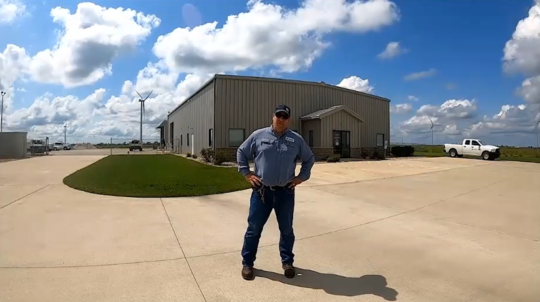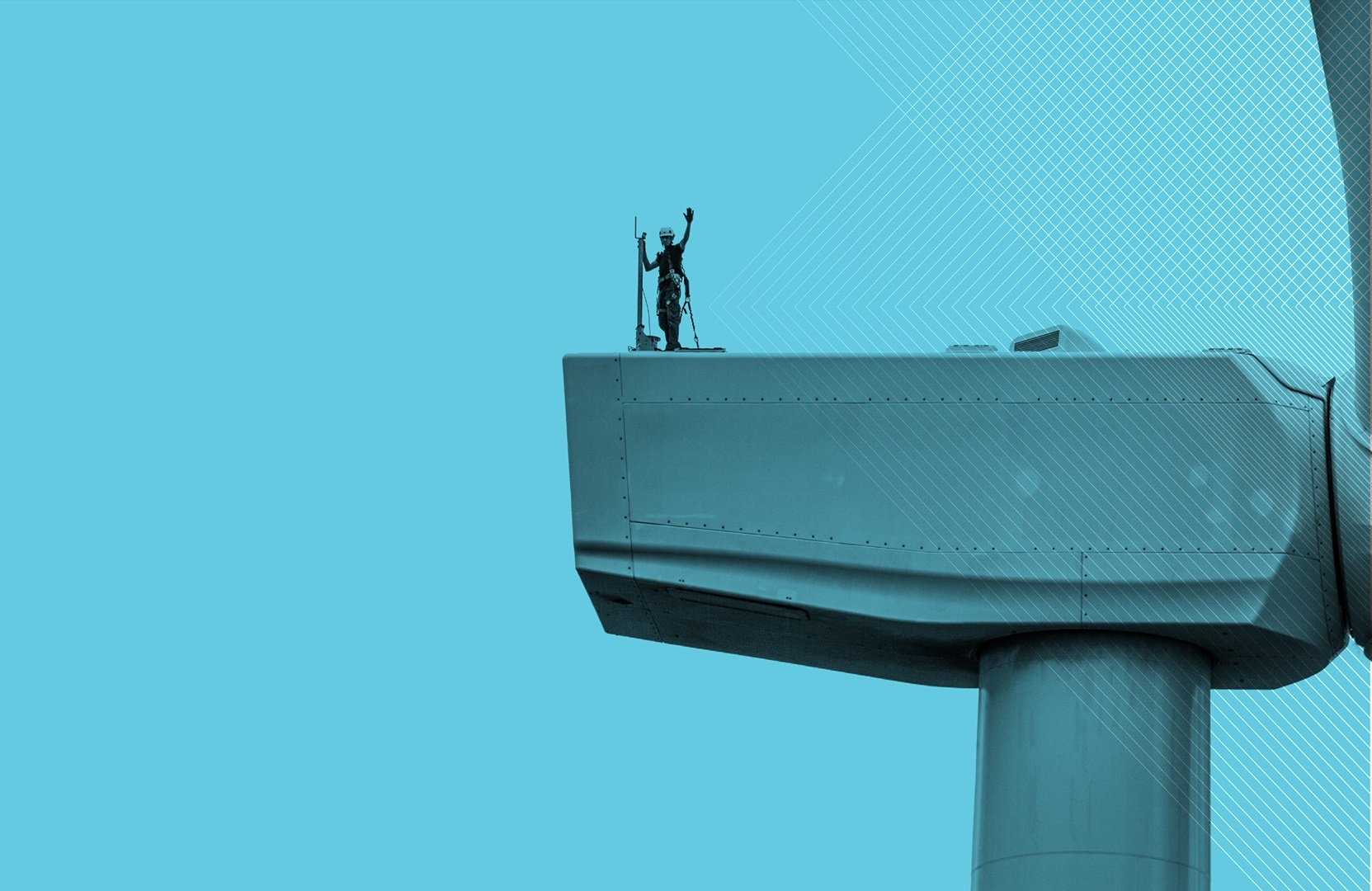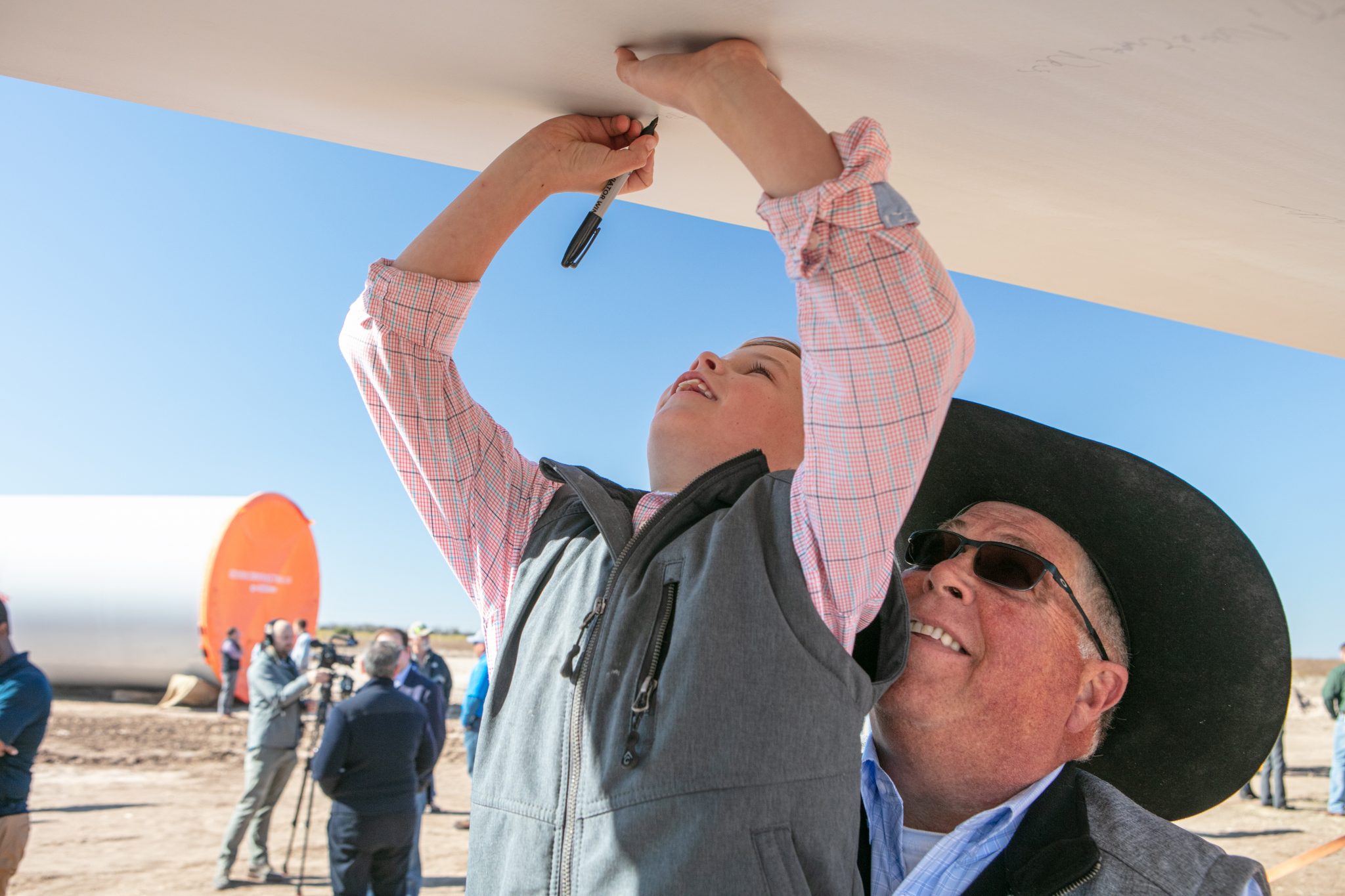Celebrating A Future Built by Wind
American Wind Week Showcases the Essential Wind Workforce
Curtis Radke stands 300 feet up in the air—taking in a majestic view over the plains—atop a wind turbine in eastern Illinois. He’s done this climb about 2,500 times in his 21-year career, but this time it’s different.
Today, his climbing group—usually just one other person and never more than you can count on one hand—includes nearly 1,000 people from all across the country. Radke’s livestream climb is kicking off the fourth annual American Wind Week, hosted by the American Wind Energy Association (AWEA) to celebrate and communicate the benefits that wind power delivers to communities across the country. This year, due to the COVID-19 pandemic, the celebration was brought online, expanding the experience to viewers from coast to coast.

Exploring (even virtually) the inside of a turbine simultaneously reveals the complexity and simplicity of wind energy. The participants also gained recognition that wind is a free, consistent, and clean natural resource with tremendous untapped potential—a fact of growing importance in our twenty-first-century world where electricity is a prerequisite for progress.
Today, there are more than 120,000 essential employees working in the U.S. wind energy industry to ensure that the lights stay on.
An Essential Workforce
Now more than ever, access to reliable power is not a luxury. Yes, a steaming cup of freshly brewed coffee and a toasted bagel in the morning is an indulgence. But the power keeping the lights on for hospitals, schools, public infrastructure, and our food supply chain is essential. Today, there are more than 120,000 essential employees working in the U.S. wind energy industry to ensure that America’s lights stay on.
As wind and solar energy expands rapidly in the United States, so too does our need for experts and technicians to maintain that growth and meet increasing demand for clean power. Wind turbine technician is one of the fastest-growing jobs in America, second only to solar panel installer. Clean energy jobs are becoming the fuel for the next generation of our economy.[/vc_column_text][vc_column_text css=”.vc_custom_1597679490853{padding-right: 50px !important;}”]Wind technicians inspect, maintain, and repair the electrical, mechanical, and hydraulic systems within a turbine—tasks that can’t be performed from the ground. At the onset of the coronavirus outbreak, the Apex asset management team immediately pivoted to implement strict new health and safety practices to keep safe the essential employees working on the front lines—and the clean energy infrastructure working at optimal levels.
The 120,000 essential employees working to supply wind power to our electric grid expands well beyond a wind farm’s footprint; they include engineers, transmission experts, attorneys, developers, HR professionals—the list goes on. The transition is also largely fueled by stakeholders, advocacy groups, and lawmakers at every level—and for good reason, particularly during times of economic uncertainty.
Economic Resilience Amid Uncertainty
The year 2020 has forced many communities across the country to confront economic realities they may have never imagined. Renewable energy—beyond its enormous environmental benefits—can provide a degree of resilience as families, businesses, and localities face an uncertain future.
Wind energy has proven its potential to revitalize entire towns and communities. For farming families in rural America, wind provides a stable, drought-proof source of revenue generation. For schools and local governments, wind farms generate millions in tax revenue. In many communities, the direct and indirect economic benefits of wind help them weather economic highs and lows.
“The best part is the revenue that it’s going to bring into our school district. We’re a pretty small school, and a lot of our facilities are outdated,” said Tim Teagarden, who lives in Coke County, Texas, where the 525 MW Aviator Wind will soon be completed and is expected to generate $1.6 million in 2020 alone. “We just recently passed a $60 million bond at the Water Valley Independent School District so that we can start renovating some of the outdated facilities. It’s going to help our kids a lot, and that’s a direct result from the wind farm.”
In many communities, the direct and indirect economic benefits of wind help them weather economic highs and lows.
A Shout-out to Our Wind Champions
The economic growth and resilience brought by wind power would not be possible without the support of government officials at every level.
Legislation to support the expansion of renewable energy is crucial for companies like Apex that want to reduce the American carbon footprint. Halfway through Wind Week, AWEA publicly recognized 16 wind champions: distinguished elected officials who have been instrumental advocates at the federal and state levels.
In particular, Apex applauds Governor Ralph Northam of Virginia, Congressman Darin LaHood of Illinois, and Governor Kevin Stitt of Oklahoma. These three legislators and their fellow champions have advocated for higher clean energy standards, the production and investment tax credits, and more—helping ensure that wind can build a clean energy future for our country.
As we look ahead, clean energy will only become more essential with every passing year. The sustainability of this planet depends on a swift and significant shift away from high-carbon-emitting practices. Wind provides an economical, sustainable, and reliable solution.
Like a 300-foot vertical turbine climb, the journey to a cleaner electric grid may be long, but the view from the top will prove to be worth it.
To catch up on photos, videos, and other resources shared throughout the week on social media, search for #AmericanWindWeek and #WindBuildsTheFuture.


